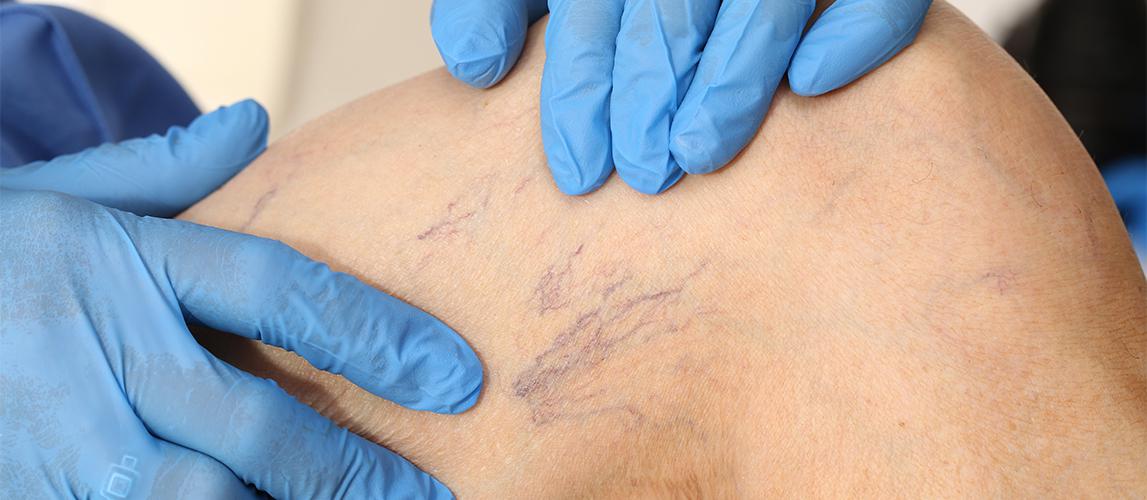Peripheral Artery Disease

In the 21st century, Vietnam has entered an age of relative prosperity. One of the immediate benefits of this is that life expectancy has soared, at least for the time being. But with the good comes the bad; there’s more smoking, less walking, and more fatty fast foods. The number of cars and bikes is growing almost every day, and people are happy to have more Western comforts. How many people have cheered that we finally have McDonald’s in Saigon? But with all this, the incidence of diabetes, high blood pressure and cholesterol is escalating at an alarming rate. It’s not the pure numbers that are so dramatic; it’s the speed at which this is growing. Going from poor to wealthy in Europe and America was a smooth transition that took 30 to 50 years, allowing the development of a health system to match gradually unfolding needs. But in Vietnam, it’s happened within just 10 years. That’s why the rise in number of patients with these problems is making a big impact on the health system. In the West, if you’re considered obese, the risk for many diseases sharply increases. But in Asia, we see diseases such as diabetes in people who are nowhere near as chubby as Westerners can be, which indicates that the number of those affected here may grow even higher. In the case of diabetes, it’s expected that more than 10 percent of the Vietnamese population will be affected.
Amputations
One of the most visible consequences of diabetes is the development of peripheral artery disease (PAD), which can lead to foot amputations. It’s said that in Western countries, between 10 to 15% of the diabetic population will one day face amputation. Here in Saigon, where people commonly wear open sandals that expose their feet to friction and dust, the expectation is that the incidence of PAD and foot amputation will be much higher. The population of Vietnam is more than 90 million; if the incidence of diabetes reaches 10 percent, this means that at least 90,000 to 135,000 amputations are on the way!
With PAD, everything starts from a tiny spot with some discomfort that you don’t pay much attention to. From there, it develops into a little blister that becomes infected. The infection starts to grow deep and can reach the bone. At that point, even the best antibiotic cannot reach the lesion, because the arteries become obstructed. Finally, the only way to prevent the infection from spreading and killing the patient is to cut off the lower leg.
Prevention
Prevention is not difficult, and information is everywhere. I don’t know the exact percentage of the population with a smartphone, but in Vietnam, it’s one of the highest — almost everyone on the streets seems to have one. That means the information is in their hands. There are so many websites on how to take care of your skin when you are a diabetic. The issue is that people have to jump from Instagram and Facebook to read educational material. The key problem comes down to human behaviour.
Fifty percent of amputations caused by PAD can be prevented with just a few easy steps. Firstly, take a look at your feet every day. Check between the toes, and keep them dry and clean. Secondly, before putting your shoes on, check that there is nothing inside. Not even a tiny stone. Pull on the tongue of each shoe to make sure that there isn’t any kind of fold. Wear snug-fitting cotton socks to avoid friction, and make sure that both shoes and socks fit comfortably.
Why all of this? It’s because the early biology of the amputation starts with the tiny nerves around your skin. Normally, you can feel any light touch, but when you have diabetes, your high blood sugar prevents these nerves from working properly. This is called neuropathy. At the same time, the high sugar also pushes up your cholesterol levels, which can obstruct the arteries. A minor blister or ulcer in the foot can start to grow, and if the area is even slightly dirty, bacteria can infect the lesion. It may not look so bad on the surface, but it can spread deep beneath the skin. By the time you see the doctor, it can be enormous.
Consultation
Consult your doctor early if you notice something unusual on your feet. A small ulcer can be treated to remove the necrotic tissue, and special dressings can be applied to promote regrowth of the removed area — we stock these at our clinic. In serious cases, immersion in a hyperbaric chamber can force oxygen into tissue with insufficient arterial reach.
As with most such diseases, it’s best to avoid the complications of diabetes by leading a healthy lifestyle. For diabetes type two, the medication isn’t enough — you need to decrease your food intake and burn off extra weight. Besides avoiding smoking, the treatment for diabetes really rests on four pillars: diet, exercise, medication, and water. Eat well, move your body, and take the proper amount of water, and your reliance on medicines will decrease. I have seen successful cases where patients have stopped taking medicine altogether after adopting healthy living practices. All it takes is a little discipline.
Dr. Pedro Trigo - Internal Medicine, Family Medical Practice Ho Chi Minh City
 We use cookies on this website to enhance your user experience
We use cookies on this website to enhance your user experience